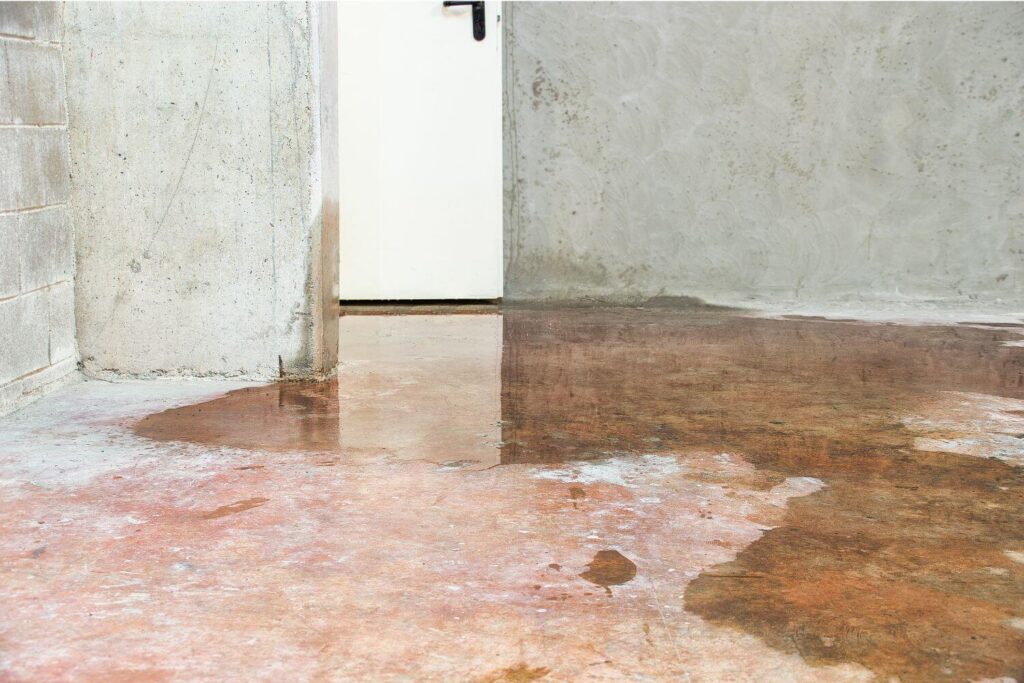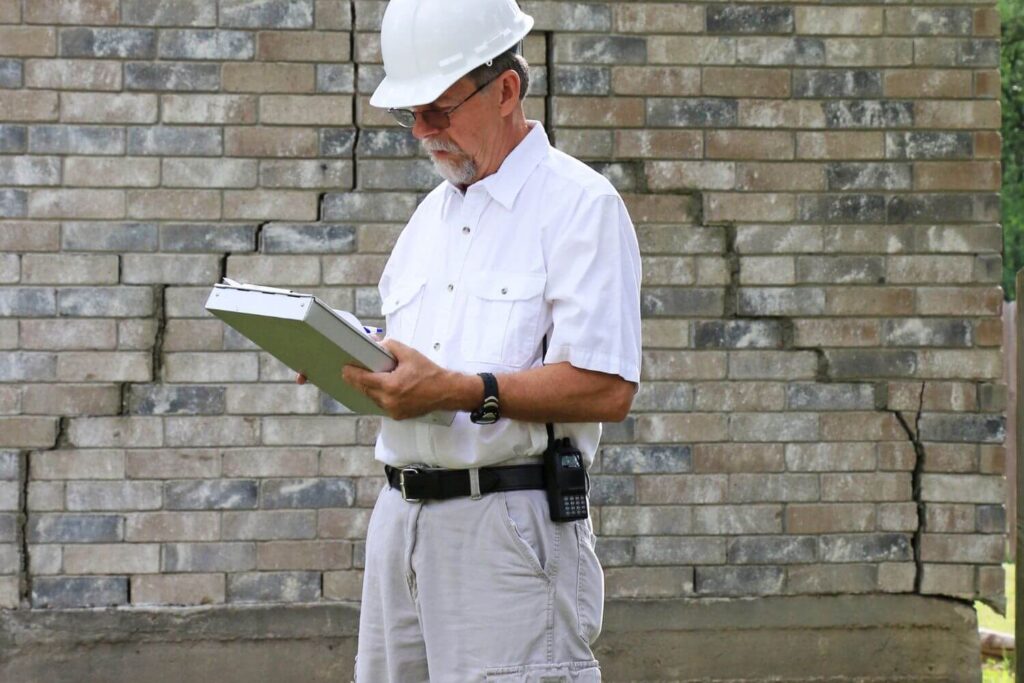When getting your basement ready for winter, foundation cracks on walls and the floor are some of the most important issues to identify during your foundation inspection. Cracks could point to larger issues in your foundation or the land beneath and around it. They could also be absolutely harmless and a normal result of your foundation’s curing and settling. As winter weather moves in, the pressures exerted on your foundation will become more dynamic and severe, and repairing cracks that affect your foundation’s strength and stability is vital. As your local foundation experts, we’ll walk you through what to look for, how to address it, and when to give us a call for a professional opinion.
Winter Weather and Soil
As temperatures cool in the fall, moisture begins to saturate the ground, compensating for the dry summer heat. Fall storms lead to winter snows, thaws, and runoff, introducing further moisture into the soil. As temperatures drop, the groundwater in the small, water-filled voids buried underground freezes and expands, creating larger voids and pressing against your basement’s walls and floors. When the ice thaws and water drains, the voids lead to a sudden reduction in pressure and support, which can create and worsen foundation cracks.
As water is forced through these cracks, the process repeats. Water freezes and expands, widening the cracks and further damaging your foundation. Eventually, this can lead to bowing, collapsing walls, flooded basements, and big foundation repair bills.
The Pre-Freeze Basement Inspection
We recommend that every homeowner make a Fall basement or foundation inspection part of their annual routine. The earlier in the Fall, the better because if you need to repair foundation cracks, temperate weather is better for the curing process and the long-term health of your patch. However, before you can start repairing cracks, you need to find and evaluate them.
- Start with a Thorough Cleaning of the Basement
A clear, clean, and well-lit space gives you the best chance to find even the smallest foundation cracks. Clearing out your basement completely isn’t always an option, but take this as an opportunity to declutter and remove materials that may become attractive homes for pests and vermin.
- Look for Signs of Leaks

Wet patches, standing water, damaged personal possessions, or a damp, musty smell can all be signs of water infiltration–foundation leaks. While leaks can be from internal sources, such as pipes or appliances, if you can eliminate these sources in an area that shows localized water damage, you may need to start your search for foundation cracks there. Pressure can force water through even the tiniest cracks, and those are the ones most susceptible to damage from Winter freezes.
- Inspect Your Basement for Cracks
Carefully check your walls and floors for foundation cracks. Move methodically from the point furthest from your basement entrance to the entrance itself. Measure cracks to determine how wide they are at their widest point, and document any cracks you find with pictures, even for ones that don’t need foundation crack repair. You can compare these pictures during the next year’s inspection to verify whether or not they’ve worsened.
- Determine Which Cracks Need Repair
Any cracks wider than ½” will need immediate repair, and it’s often a good idea to get ahead of future issues by repairing those approaching the ½” mark. Horizontal cracks that are away from the floor or cracks that are obvious leak sources also need to be repaired immediately.
Foundation Crack Repair
Smaller cracks can be repaired easily by the homeowner, including cracks around ½” wide or less as long as there aren’t any other risk factors, such as heavy leaking, bowing walls, or signs of severe damage under the surface. Concrete patch compound is available in many departments, hardware stores, and home improvement stores. Fixing these foundation cracks is a straightforward process with a high chance of successful repair.
- Determine How Much Patch Material You Need – Patch material is available in small tubes all the way up to large buckets. While you may not know the exact amount you need to repair your foundation cracks, it’s better to have a little concrete patch left over than to skimp on filling cracks that could put the whole foundation in danger.
- Read the Directions on the Container – The directions will tell you the best way to prepare your concrete surface for patching, the temperature range necessary for proper curing, and how long it takes for the patch to cure.
- Clean the Area to be Patched – Using a wire brush or small chisel, remove dirt, old patch material, chips, fragments, and any other loose material. The cleaner access your concrete patch has to the two slab pieces it’s joining, the better the adhesion and repair will be.
- Apply the Concrete Patch – Use a putty knife to spread a generous portion of foundation crack repair into and around the crack. Then, scrape the knife in line with the crack to create a smooth, even surface. With the material that is transferred back to the knife or scraper, repeat the process. You want to get as much patch material into the gap as possible, then leave the top smoothed down. Concrete patch is formulated to not shrink as it cures, so there’s no need to leave “extra” material.
- Allow the Patch to Cure Properly – Once the patch is applied to your foundation cracks, it needs time to properly harden and permanently bond to the concrete. Your product instructions will let you know how long before the foundation crack repair is waterproof or can be painted and what special conditions, if any, need to be met for proper curing. You may need to use a supplemental fan for airflow or a space heater to maintain a stable room temperature, depending on these instructions.
When Foundation Cracks Need Professional Attention

Some foundation cracks may signal bigger problems than a bucket of concrete patch material can fix on its own. When this happens, you need a foundation repair specialist who knows how to identify the root cause and fix it. Cracks that run horizontally along a wall but that aren’t near where the wall meets the floor, stair-step cracks, or obviously bowing or leaning walls need to be professionally inspected immediately. Each one points to conditions that could threaten the integrity of the entire house.
Get Your Free Foundation Inspection and Repair Quote
There’s no cost to schedule a visit from a foundation professional who’ll inspect your basement and any foundation cracks. They’ll take a look at any damage, create a tailored repair plan, and provide a written estimate that explains your options to protect your home. Take the first step toward getting your foundation cracks repaired. Schedule a free foundation inspection with A.M. Wall Anchor & Waterproofing today.

